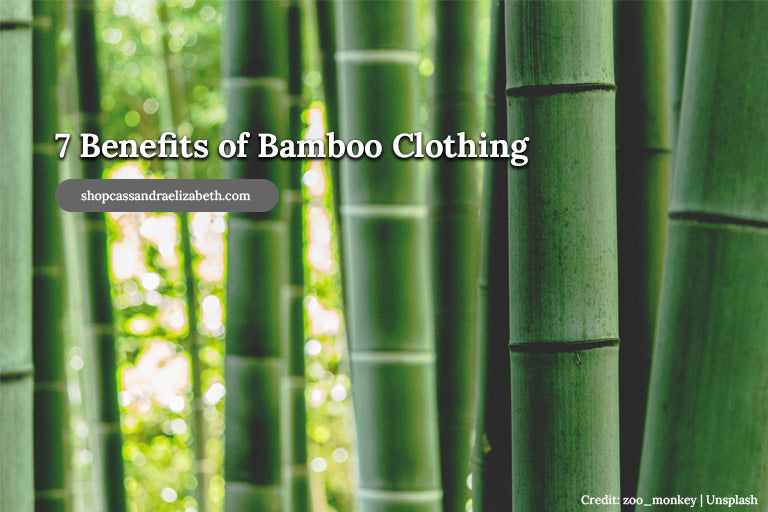Great Info To Picking Bamboo Clothes
Wiki Article
What Is The Sustainability Of Hemp Relative To Cotton, In Terms Of Use Of Water Or Pesticides?
There are many reasons why hemp is thought to be a more sustainable and eco-friendly crop as compared to cotton when it comes to the use of water, pesticides, and herbicides.
Hemp The needs for water in Hemp are low in comparison to other crops, like cotton. Hemp is regarded as a drought-tolerant plant that can flourish without much irrigation. Hemp can often be grown using rainwater alone in many regions and is therefore a more efficient choice for water use.
Cottonis a commodity that is known for its heavy water use. Cotton farming requires extensive irrigation which could lead to local water shortages and the depletion of water in areas that are under stress. Cotton farming has been criticised due to its high water use.
Pesticides, Herbicides
Hemp: Hemp has a natural defense against numerous insects. This decreases the need for synthetic pesticides. Even though some hemp plants might require only a few pest control measures to ensure their health, the overall dependence of chemical inputs, including cotton, is much smaller than that of other crops. Hemp organic cultivation is virtually free of pesticides.
Cotton- The conventional cultivation of cotton is based on synthetic herbicides and pesticides to control weeds and pests. Chemicals can have negative environmental consequences, such as water and soil pollution as well as harm to species not intended for control and also the development of pesticide-resistant insects.
In short hemp is regarded as to be a more sustainable plant than cotton when it comes to water usage, pesticides, and herbicides-
Hemp can be grown with minimal water, rainwater or irrigation.
Hemp is naturally resistant to disease and pests and reduces the need for pesticides.
Hemp crops need less pesticides and herbicides made of synthetics as compared to traditional cotton.
It is also crucial to understand that sustainable practices and environmentally friendly farming techniques can differ based on the region and individual cultivators. Organic farming practices can further improve the sustainability of hemp and cotton by reducing the usage of synthetic chemicals as well as enhancing the health of the soil. When it comes to the impacts that textiles and clothing have on the environment, choosing sustainable, organic fibers such as cotton or hemp could minimize the impact. See the most popular right here for hemp clothes for blog advice including womens hemp clothing, patagonia hemp work pants, jungmaven sweatshirt, womens hemp clothing, jeans hemp, patagonia hemp vest, organic hemp underwear, hemp underwear, hemp pants mens, hemp tank top and more.

What Are The Benefits Of Hemp Fibers In Terms Of Carbon Sequestration?
Carbon Sequestration Hemp fibers offer numerous environmental benefits which include sustainability, crop rotation, and carbon sequestration.
Hemp develops rapidly, and can be matured in 70-120 days depending on its type and growth conditions. During their rapid-growth phase hemp absorbs carbon dioxide from the atmosphere via photosynthesis. This carbon uptake can significantly contribute to carbon sequestration, which reduces CO2 levels in atmosphere.
Hemp has a significant biomass production. The thick foliage and the tall stalks of hemp produce huge quantities of organic matter. If this biomass is added into the soil or used for various applications in the garden, it may help in the building up of organic carbon in soil, further securing carbon.
Sustainability:
Hemp crops require less chemical pesticides and herbicides when compared with other crops like cotton. The hemp's natural resistance to many insects and diseases is reduced by chemical interventions. Organic hemp farming, in particular promotes sustainable farming by avoiding synthetic chemicals.
Hemp can be irrigated using only a small amount of water, in contrast to other plants that require a lot of water, like cotton. This makes it more sustainable in regions that are water-limited.
Hemp's deep-rooted system is able to improve the health of the soil. Its deep roots can help lower runoff through stabilizing soils and improving the structure of soil. Hemp farming can boost soil microbial activity, increasing soil fertility and nutrient cycling.
Hemp can be easily integrated into rotation systems. Crop rotation refers to the process of rotating crops in a field for a period of time. This technique can end the cycle of disease and pests, reduce soil depletion and improve soil structure. The role of hemp in crop rotation helps to ensure sustainability.
Crop Rotation
Hemp can be incorporated into crop rotation systems along with other crops such as legumes, grains, or vegetables. Diversification is crucial to maintain soil health, reducing the chance of pests or illnesses that are unique to particular crops, as well as promoting balanced nutrient cycle.
The hemp's deep roots allows it to penetrate soil and aerate it, reducing compaction while also increasing the amount of water that is absorbed. The improved soil structure following hemp cultivation benefits subsequent crop.
In short, hemp fibers enhance the storage of carbon, sustainability, and cultivation practices because of their rapid growth and biomass production. Additionally, they require less chemicals, make efficient use of water and are compatible with crop rotation systems. This makes hemp cultivation a green and sustainable agricultural practice. See the most popular hemp clothes for website examples including american made hemp clothing, hemp swimsuit, hemp trousers, mens hemp t shirts, patagonia hemp pants, hemp underwear, hemp swimsuit, hemp and cotton fabric, hemp clothing womens, t shirt hemp and more.

Bamboo Clothing Is Environmentally Friendly And Incredibly Comfortable.
Bamboo clothing offers several advantages when it comes to both environmental sustainability and comfort.
Bamboo fabric is known for its softness. It has a soft, silky texture that is easy to wear. Bamboo clothing is silky soft texture that makes it popular as intimate apparel, activewear, and loungewear.
Bamboo fibers are known for their capacity to absorb moisture and they are breathable. The micro-gaps allow air to circulate and keep you cool. The moisture-wicking properties help pull sweat away from your skin, and reduce the feeling of dampness.
Bamboo clothing has excellent thermoregulatory properties. It can help keep you warm in cooler temperatures by trapping heat close to the body. In addition, it helps keep you cool in hot temperatures by allowing excess water and heat to evaporate. The flexibility to various temperatures is what makes bamboo clothing suitable for year-round wear.
Hypoallergenic- Bamboo fabric is hypoallergenic and soft for skin that is sensitive. It's less likely to cause skin irritation or allergic reactions.
Bamboo fibers are resistant to odors thanks to their antimicrobial properties. This characteristic contributes towards the freshness and ease of wearing bamboo clothes even during exercising.
Environment-
Sustainability- Bamboo can be a sustainable and renewable resource. It is among the fastest-growing species and requires minimal water. There are no herbicides, pesticides, or any other chemical are required for the cultivation of bamboo. Bamboo is harvested, and it will regenerate itself by regrowing its roots.
Bamboo is water-efficient and has a low consumption. It is able to thrive with very little irrigation and can often be planted by rainwater only. This helps reduce the environmental impacts that come with agricultural water usage.
Biodegradability- Bamboo clothes are biodegradable which means it degrades naturally as it is disposed. This feature reduces waste that is not biodegradable textiles dumped in landfills.
Carbon Sequestration. Bamboo can be utilized to sequester CO2 during its rapid expansion. Bamboo cultivation acts as a carbon dioxide sink, reducing the levels of greenhouse gases as well as helping to slow climate changes.
Chemical Reduction. The manufacturing process for Bamboo Fabric generally requires less treatment and processes compared to other textiles.
Closed Loop Production Certain bamboo fabrics are made by closed loop systems that recycle and reuse chemicals and water, minimising production waste.
It is important to be aware that the impact of your actions on the environment for bamboo clothing is different according to whether it's produced using sustainable and responsibly managed bamboo forests. To reap the maximum environmental benefit, buyers should seek out bamboo clothing that are made using sustainable and ethical practices. Take a look at the top their explanation about bamboo clothes for website examples including bamboo pants womens, bamboo cay shirts, mens bamboo boxer shorts, bamboo button down shirts, bamboo clothing leggings, bamboo mens shirts, bamboo tee shirts wholesale, bamboo sweater, bamboo hawaiian shirts, bamboo family pajamas and more.
